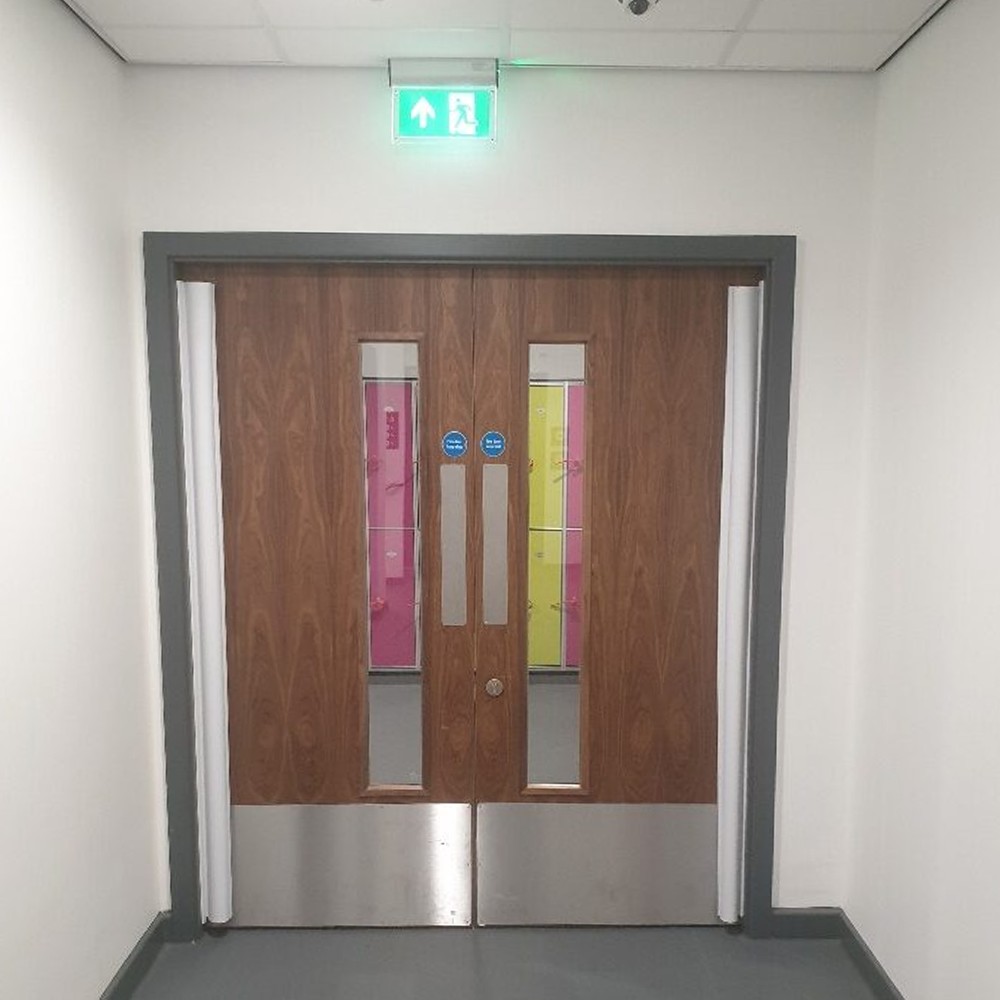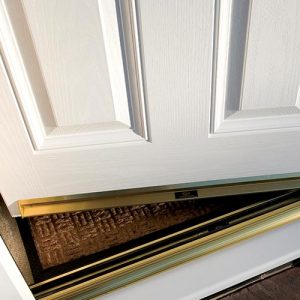Fire Doors: Understanding Their Duty in Fire Security and Safety Codes
Fire Doors: Understanding Their Duty in Fire Security and Safety Codes
Blog Article
Understanding the Various Kinds Of Fire Doors for Improved Safety And Security
From typical fire-rated doors that protect against fires to acoustic fire doors that supply both fire resistance and audio insulation, each kind is made with certain functions in mind. The integration of glass fire doors and the necessity of fire departure doors additionally highlight the multifaceted nature of fire door applications.
Standard Fire-Rated Doors
Common fire-rated doors are an important element in making certain building security and compliance with fire laws. These doors are specifically developed to stand up to the spread of fire and smoke, providing essential protection to residents and property. Constructed from products such as steel, plaster, and fire-resistant timber, they can stand up to high temperature levels and maintain architectural stability for varying durations, normally ranging from 20 mins to three hours.
The effectiveness of common fire-rated doors is measured by their fire-resistance score, which is figured out with extensive screening under regulated problems. This rating shows the period throughout which the door can consist of fires and warm, thus allowing added time for evacuation and emergency situation feedback. Additionally, these doors usually include intumescent seals that expand when revealed to warm, more protecting against the flow of smoke and poisonous gases.
Setup of conventional fire-rated doors should follow rigid building regulations and standards, such as those established by the National Fire Protection Organization (NFPA) and the International Building Ordinance (IBC) Normal evaluations and upkeep are crucial to make sure that these doors function correctly in an emergency. Effectively installed and kept fire-rated doors are essential in improving total building security and lessening fire-related dangers.
Smoke Doors
Smoke doors play an essential role in fire safety and security by especially attending to the control of smoke, which is frequently much more hazardous than flames throughout a fire case. Smoke breathing can lead to severe respiratory system issues, disorientation, and also deaths, making smoke doors a vital component in emergency planning. These doors are designed to limit the movement of smoke in between various compartments within a structure, consequently giving more secure emptying routes and decreasing possible damages to building.

In addition, smoke doors are usually furnished with automatic closing devices, caused by smoke detectors or emergency alarm, to guarantee they close promptly during an emergency situation. By containing smoke, these doors help preserve reduced temperature levels and more clear visibility in retreat routes, making them an indispensable element in thorough fire safety methods. Their proper installation and maintenance are important to make certain optimum efficiency when most needed.
Acoustic Fire Doors
Acoustic fire doors supply a twin function in both fire security and audio depletion, making them a beneficial addition to buildings where noise control is crucial. These doors are engineered to not only satisfy rigorous fire resistance requirements but additionally to considerably reduce audio transmission, consequently enhancing total building performance.
The construction of acoustic fire doors usually includes a mix of thick materials and specialized seals. These components collaborate to develop an effective barrier versus both fire and sound. High-density cores, such as mineral boards or composite products, are generally made use of in the door leaf to optimize audio insulation. In addition, the door framework and seals are created to preserve acoustic honesty while using durable fire resistance.
Acoustic fire doors are particularly beneficial in atmospheres where privacy and peaceful are extremely important, such as hospitals, resorts, and universities. They assist to keep a peaceful ambience by reducing the transmission of sound between spaces or passages while making certain conformity Source with fire safety policies. In addition to their functional benefits, these doors can be customized to mix flawlessly with the architectural appearances of a building, making certain that safety does not come at the expenditure of layout.

Glass Fire Doors
Glass fire doors, regularly utilized in modern building styles, provide a mix of openness and security that standard fire doors can not match. These doors incorporate the visual appeal of glass with necessary fireproof homes, making them a suitable option for modern structures. Engineered with specialized fire-resistant glazing, glass fire doors can withstand high temperatures and stop the spread of flames and check my reference smoke for a defined period, typically varying from 30 to 120 mins.
The building of glass fire doors entails several layers of toughened up glass, commonly treated with intumescent products that expand when exposed to heat, additional improving their fireproof abilities. These doors are not only useful in regards to fire security but additionally permit all-natural light to permeate through spaces, contributing to energy performance and a much more welcoming environment.
Furthermore, glass fire doors can be integrated with different framework materials such as steel or light weight aluminum, which supply added architectural support and toughness. The use of such doors is especially beneficial in business, academic, and health care settings where visibility and security are extremely important. By satisfying strict fire safety policies and maintaining an open, modern aesthetic, glass fire doors represent an essential innovation in fire-resistant building and construction.

Fire Exit Doors
Fire escape doors are a critical part of any type of building's security facilities, developed to provide a swift and safe and secure methods of egress during emergency situations. These doors are tactically situated to make sure passengers can rapidly and safely evacuate the facilities in case of a fire or various other unsafe scenarios. Unlike standard doors, fire leave doors must abide by stringent regulative standards, guaranteeing they can carry out accurately under discomfort.
A crucial attribute of fire escape doors is their capability to open quickly from the inside, typically equipped with panic bars or press pads. This design promotes quick emptying and prevents traffic jams that can happen throughout high-stress situations. Additionally, fire exit doors Check Out Your URL are usually built from fireproof materials to stop the spread of fires and smoke, thereby providing essential extra time for emptying and firefighting efforts.
Another essential facet is the clear signs and illumination linked with fire leave doors. Inevitably, the performance of fire departure doors is an important aspect in protecting lives and lessening property damage throughout emergencies.
Conclusion
In summary, understanding the different kinds of fire doors, including basic fire-rated doors, smoke doors, acoustic fire doors, glass fire doors, and fire departure doors, is crucial for enhancing safety and security in structures. Each type supplies details advantages, from fire and smoke control to sound insulation and visual assimilation, making certain thorough security. Fire doors. Regular upkeep and conformity with safety and security requirements are crucial to ensure their efficiency in securing occupants and promoting secure discharge throughout emergencies
Report this page